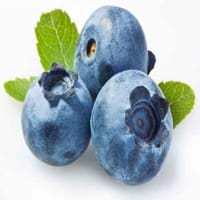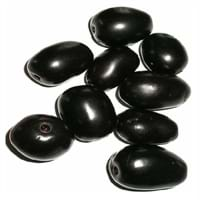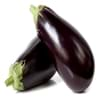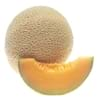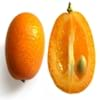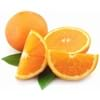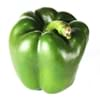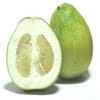Health Benefits
Anti depressant, Cancer prevention, Heart care, Increases metabolic rate, Prevents constipation
Cancer prevention, Heart care, Increase in haemoglobin, Regulates Blood Sugar, Ulcer prevention
General Benefits
Anti oxidant properties, Controls blood pressure, Digestive aid, Eye care, Helps in weight loss, Strengthens bones
Boosts immune system, Digestive aid, Fights against infections, Strengthens bones
Skin Benefits
Anti-aging benefits, Reduces wrinkles, Skin rejuvenation, Skin revitalization, Treatment of acne, Treatment of dark spots
Brightens and lightens complexion, Skin cleansing, Skin rejuvenation, Treatment of acne, Treatment of dark spots
Hair Benefits
Promotes longer and healthier hair, Regulates hair growth
Promotes longer and healthier hair, Protects hair
Allergy Symptoms
Abdominal pains, Anaphylaxis, Breathing difficulty, Coughing, Decrease in blood pressure, Diarrhea, Eczema, Fainting, Hives, Lightheadedness, Nausea, Runny nose, Sneezing, Swelling of mouth, tongue or lips, Vomiting, Wheezing
Abdominal pains, NA
Side Effects
Affects blood glucose levels, Decrease in blood sugar levels, Allergic reaction
Decrease in blood sugar levels, Allergic reaction, Throat irritation, Throat swelling, Possibly unsafe during pregnancy
Best Time to Eat
As a snack in the late afternoon, Eat the fresh ones, avoid mixing with any other foods, don't eat after meal., Morning time (before lunch)
As a snack in the late afternoon, Don't consume at night and before bed, Eat the fresh ones, avoid mixing with any other foods, don't eat after meal., Morning time (before lunch), Strictly avoid empty stomach
Vitamin B5 (Pantothenic Acid)
Not Available
Vitamin B9 (Folic acid)
Not Available
Vitamin C (Ascorbic Acid)
Vitamin E (Tocopherole)
Not Available
Vitamin K (Phyllochinone)
Not Available
Lutein+Zeaxanthin
Not Available
Calories in Fresh Fruit with Peel
Calories in Fresh Fruit without Peel
Not Available
Not Available
Calories in Frozen Form
Not Available
Calories in Dried Form
Not Available
Calories in Canned Form
Not Available
Type
Berry
Tree fruit, Tropical
Season
Summer
Monsoon, Summer
Varieties
Pink Lemonade, Bluecrop, Bluejay, Blueray, Bonus, Duke, Elliott, Jersey, Nelson, Northland, Patriot, Sierra, Spartan, Northcountry, Northsky and Premier and Climax
Ram Jarnun and Paras
Color
Blue, Indigo
Black, Magenta, Purple
Inside Color
Greyish-white
Purple
Taste
Sweet
Astringent, Sweet
Origin
North America
Bangladesh, India, Indonesia, Malaysia, Nepal, Pakistan, Philippines, Sri Lanka
Soil Type
Porous, Well-drained
Loam, Sandy loam, Well-drained
Climatic Conditions
Cold
Humid, Rainfall
Facts about
- National blueberry month is July as blueberries are harvested in July.
- They are the official berries of Nova Scotia, Canada.
- Blueberries are used as natural food color and can protect you from memory loss.
- Wood of jambul tree is water-resistant wood & is used in railroads and to implement engines in the well.
- In Indian mythology, it is said that Jambul fruit was revered by Buddha.
- Jambul has a huge importance in Ayurveda.
Top Producer
United States of America
India
Other Countries
Canada, Germany, Netherlands, Poland
Bangladesh, Indonesia, Malaysia, Nepal, Pakistan, Philippines, Sri Lanka
Top Importer
United States of America
Not Available
Botanical Name
Vaccinium myrtillus
Syzygium cumini
Synonym
Not Available
Eugenia cumini
Subkingdom
Tracheobionta
Tracheobionta
Division
Magnoliophyta
Magnoliophyta
Class
Magnoliopsida
Magnoliopsida
Subclass
Dillenhidae
Rosidae
Family
Ericaceae
Myrtaceae
Species
V. myrtillus
S. cumini
Generic Group
Heath
Not Available
Difference Between Blueberry and Jambul
We might think that Blueberry and Jambul are similar with respect to nutritional value and health benefits. But the nutrient content of both fruits is different. Blueberry and Jambul Facts such as their taste, shape, color, and size are also distinct. The difference between Blueberry and Jambul is explained here.
The amount of calories in 100 gm of fresh Blueberry and Jambul with peel is 57.00 kcal and 60.00 kcal and the amount of calories without peel is Not Available and Not Available respectively. Thus, Blueberry and Jambul belong to Low Calorie Fruits and Low Calorie Fruits category.These fruits might or might not differ with respect to their scientific classification. The order of Blueberry and Jambul is Ericales and Myrtales respectively. Blueberry belongs to Ericaceae family and Jambul belongs to Myrtaceae family. Blueberry belongs to Vaccinium genus of V. myrtillus species and Jambul belongs to Syzygium genus of S. cumini species. Beings plants, both fruits belong to Plantae Kingdom.
